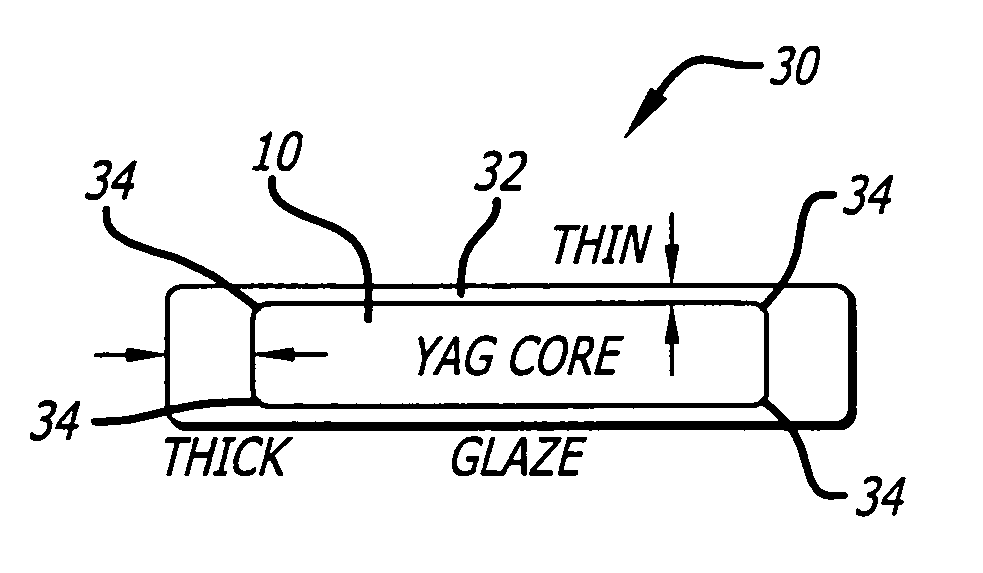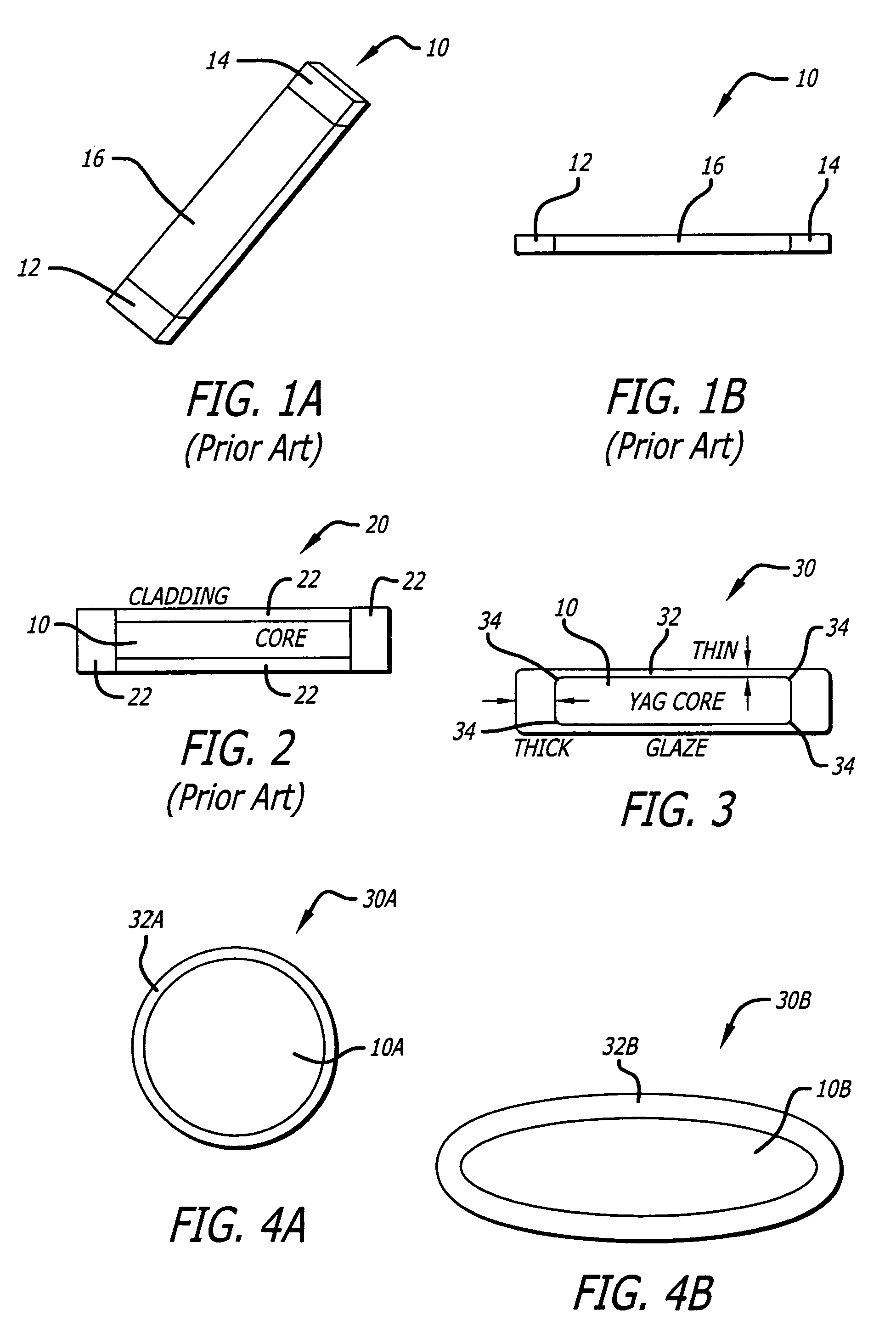Articulated glaze cladding for laser components and method of encapsulation
a laser component and cladding technology, applied in lasers, laser details, active medium materials, etc., can solve the problems of reducing the efficiency of a solid-state laser system, parasitic oscillation, and reducing the efficiency of projected slabs, so as to achieve the effect of suppressing parasitic oscillation
- Summary
- Abstract
- Description
- Claims
- Application Information
AI Technical Summary
Benefits of technology
Problems solved by technology
Method used
Image
Examples
Embodiment Construction
[0017]Illustrative embodiments and exemplary applications will now be described with reference to the accompanying drawings to disclose the advantageous teachings of the present invention.
[0018]While the present invention is described herein with reference to illustrative embodiments for particular applications, it should be understood that the invention is not limited thereto. Those having ordinary skill in the art and access to the teachings provided herein will recognize additional modifications, applications, and embodiments within the scope thereof and additional fields in which the present invention would be of significant utility.
[0019]FIG. 1a is a perspective view of a conventional laser gain medium plate 10, and FIG. 1b is a side view of the conventional laser gain medium plate 10 of FIG. 1a. The laser gain medium plate 10 is comprised of a thin core plate having a rectangular cross-section and including two undoped input and output sections 12 and 14 and a doped central se...
PUM
| Property | Measurement | Unit |
|---|---|---|
| temperature | aaaaa | aaaaa |
| interfacial thermal stresses | aaaaa | aaaaa |
| elastic moduli | aaaaa | aaaaa |
Abstract
Description
Claims
Application Information
 Login to View More
Login to View More - R&D
- Intellectual Property
- Life Sciences
- Materials
- Tech Scout
- Unparalleled Data Quality
- Higher Quality Content
- 60% Fewer Hallucinations
Browse by: Latest US Patents, China's latest patents, Technical Efficacy Thesaurus, Application Domain, Technology Topic, Popular Technical Reports.
© 2025 PatSnap. All rights reserved.Legal|Privacy policy|Modern Slavery Act Transparency Statement|Sitemap|About US| Contact US: help@patsnap.com


